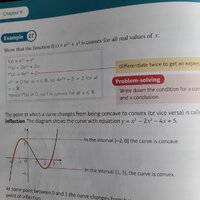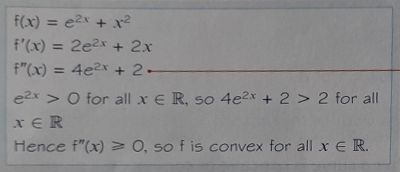Skelly4444
Junior Member
- Joined
- Apr 4, 2019
- Messages
- 63
In my maths book, all the worked examples go through the process of differentiating the function twice.
From this point, the result is then set to greater than zero or less than zero, depending on whether we're trying to establish convex or concave etc.
The worked example I have attached has confused me somewhat as I can't seem to see what they've done here?
Surely, if you set the 2nd order derivative to greater than zero here, you obtain a result of -0.5 on the right hand side of the inequality?
Any advice would be appreciated.
From this point, the result is then set to greater than zero or less than zero, depending on whether we're trying to establish convex or concave etc.
The worked example I have attached has confused me somewhat as I can't seem to see what they've done here?
Surely, if you set the 2nd order derivative to greater than zero here, you obtain a result of -0.5 on the right hand side of the inequality?
Any advice would be appreciated.


